1. Cheap Window Treatments

Flimsy curtains or blinds are an easy way to make a room look unfinished. Thin fabrics or panels that are too short instantly give away their budget origins. Instead, designers recommend hanging curtains high and wide to create the illusion of taller ceilings and larger windows. Opting for lined panels or natural fabrics like linen or cotton also adds substance.
Window treatments act like the room’s clothing—if they don’t fit or feel right, everything looks off. Investing a little more in proper drapery hardware and fuller panels creates a more tailored effect. Even ready-made curtains can look custom if you steam them and hem them properly. The goal is to make your windows feel dressed, not neglected.
2. Matching Furniture Sets
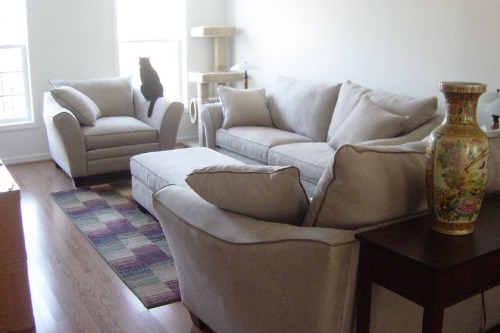
When everything in a room comes from the same furniture set, it can make the space feel flat and uninspired. Perfectly coordinated pieces often lack the individuality that gives a room character. Designers typically recommend mixing materials and finishes to add visual depth and interest. Even just pairing a vintage chair with a modern sofa can make a big difference in creating a curated, lived-in feel.
A more collected look suggests that your space evolved over time rather than being bought all at once. This creates a sense of authenticity and sophistication. The mix-and-match approach also makes it easier to swap out pieces as your style evolves. It’s a reminder that variety, not uniformity, often makes a home feel more expensive.
3. Poor Lighting
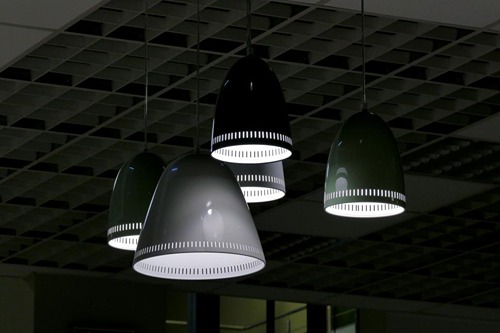
Harsh overhead lighting can instantly cheapen the mood of a room. It flattens out textures and washes away warmth, making even high-quality decor look lackluster. Designers often layer lighting through a mix of ambient, task, and accent sources to add dimension. Lamps, sconces, and candles create cozy pools of light that make a space feel intentional and inviting.
When lighting is too bright or too cold, it can make even the best furnishings look sterile. A softer, warmer light temperature—around 2700K—is often preferred for residential spaces. Dimmers are another small upgrade that can make a big impact. With adjustable lighting, you can control the atmosphere instead of letting it control you.
4. Overusing Gray
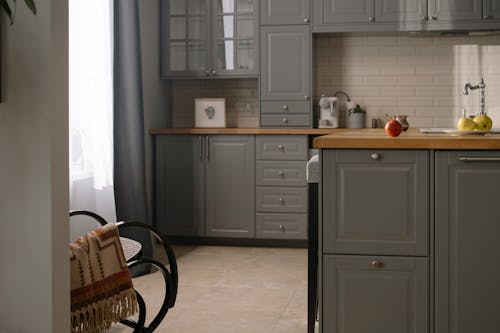
Gray was once the darling of modern interiors, but too much of it can drain the life out of a room. When every wall, sofa, and rug shares the same neutral tone, the space can feel dull and impersonal. Designers now suggest mixing warmer tones, natural textures, and layered neutrals to create a more balanced palette. Even a hint of color—a terracotta vase or navy throw—can make a gray-heavy room feel refreshed.
The key is contrast. Without it, gray can look more like concrete than chic. A little warmth, whether from wood tones or brass accents, breaks up the monotony and adds richness. Over-reliance on one color, especially a cool neutral, often reads as safe rather than stylish.
5. Too Many Small Decor Items
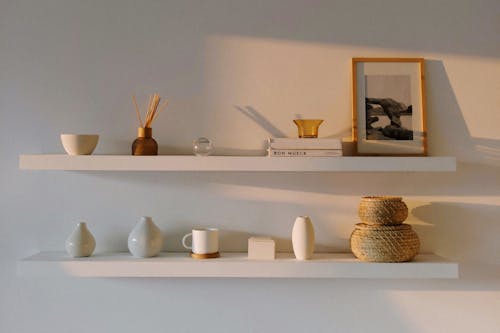
A collection of tiny knickknacks can quickly make a room feel cluttered and chaotic. When every surface is covered with trinkets, the eye has nowhere to rest. Designers often emphasize the importance of negative space to let key pieces stand out. Fewer, larger objects typically look more intentional and elevated.
Think of it as visual breathing room. A single statement vase or sculptural object has far more impact than a dozen small ones. Grouping decor items in odd numbers—like threes—also helps them look balanced rather than random. When in doubt, edit rather than add.
6. Wall Art That’s Too Small
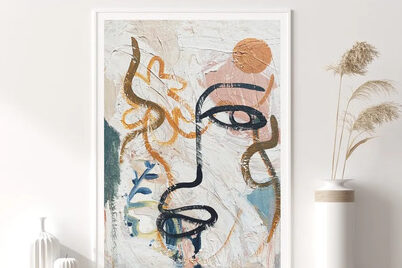
Hanging artwork that’s undersized for the wall can make an entire room feel out of proportion. A tiny print floating in a large space looks accidental instead of intentional. Designers suggest filling at least two-thirds of the available wall area above furniture for better balance. Gallery walls or oversized canvases can help anchor a space and create presence.
Art is one of the easiest ways to make a statement, but it needs the right scale to work. If you can’t find large pieces, try combining several smaller frames into a cohesive arrangement. Proper framing and spacing matter just as much as the artwork itself. Big doesn’t just mean bold—it signals confidence in your design choices.
7. Fake Plants That Look Too Fake
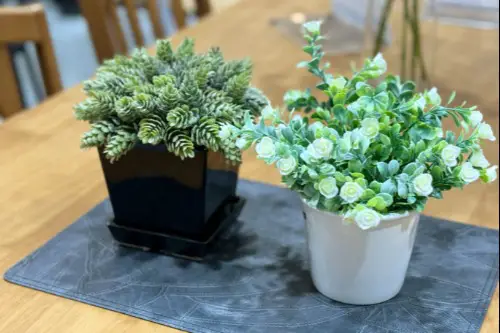
Artificial plants can be great for low-maintenance greenery, but overly plastic-looking ones ruin the illusion. Glossy leaves, unnatural colors, or visible seams make them look more like craft supplies than decor. High-quality faux plants use realistic textures and varied tones to mimic the real thing. Even better, mixing in a few live plants can make the entire arrangement feel more believable.
Nature-inspired elements help soften a space and make it feel fresh. When they look fake, they do the opposite—adding visual noise instead of calm. Dusting faux plants regularly also helps maintain the illusion of life. A little upkeep goes a long way in keeping your space from feeling stagnant.
8. Low-Quality Rugs
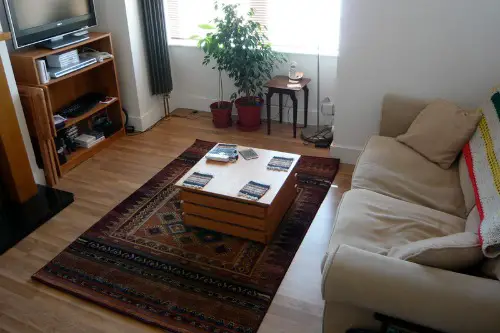
A thin, wrinkled rug can cheapen a space faster than almost anything else. Rugs anchor furniture and define zones, so when they’re the wrong size or material, everything feels off. Designers often recommend that rugs extend at least under the front legs of major furniture pieces for balance. Natural materials like wool or jute also tend to age more gracefully than synthetic fibers.
An undersized rug can make a room feel disconnected and smaller. Investing in the right size—even if it means saving up—creates a more polished look. Layering a smaller statement rug over a larger neutral one is another designer trick. It’s all about giving the floor the same attention as the walls and furniture.
9. Clashing Metal Finishes

Mixing metal finishes can look great when done intentionally, but too many competing tones can read as chaotic. Gold, chrome, and black hardware all have strong personalities—throw them together haphazardly and the result feels disjointed. Designers suggest sticking to two complementary finishes to keep things cohesive. For example, matte black pairs nicely with brushed brass, while chrome works well with nickel.
Consistency helps create flow between rooms. When every knob and fixture feels random, the design loses its polish. You don’t have to make everything match, but there should be a clear visual logic. A little planning turns “mismatched” into “eclectic with purpose.”
10. Excessive Theming
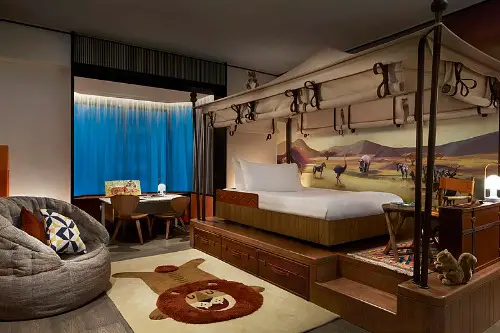
A beach house filled with seashells or a farmhouse overloaded with “gather” signs can cross the line from charming to cliché. Over-theming makes decor feel forced and one-dimensional. Instead, designers recommend using subtle nods to a style—like natural textures for coastal or rustic woods for farmhouse—without overdoing it. The best spaces hint at a theme rather than shouting it.
Overly literal decor tends to age quickly as trends shift. A balanced approach lets you evolve your style without replacing everything. Layering timeless materials and artful touches creates longevity. Subtlety is often the hallmark of sophisticated design.
11. Ignoring Scale and Proportion
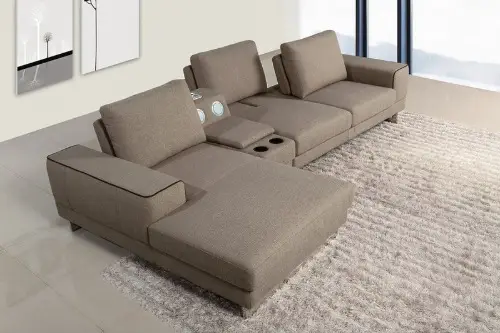
Even beautiful furniture can look wrong if it’s the wrong size for the room. Oversized sectionals in small living rooms or tiny nightstands next to tall beds disrupt visual balance. Designers pay close attention to scale because it affects how comfortable and functional a space feels. A well-proportioned room feels calm and intentional, while mismatched pieces feel haphazard.
Measure before you buy—it’s one of the simplest ways to elevate your design. Online room planners or masking tape mockups can help you visualize layout before committing. When the scale works, everything else feels more luxurious. Proportion is what ties the entire design together.
12. Neglecting Finishing Touches
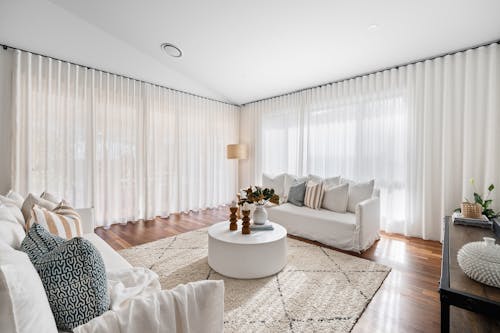
A room without finishing details—like art, greenery, or decorative pillows—can feel sterile and incomplete. Even expensive furniture loses impact when surrounded by blank walls or bare surfaces. The finishing layer is where personality comes through, turning a space from functional to inviting. Designers often say it’s the “styling” that makes a room come alive.
That doesn’t mean over-decorating, but rather editing with intention. A mix of textures, colors, and personal items adds warmth and authenticity. These final touches show care and attention, two qualities that always read as high-end. It’s proof that the little things truly finish the look.
This post 12 Design Choices That Instantly Make a Room Feel Cheaper was first published on Greenhouse Black.
